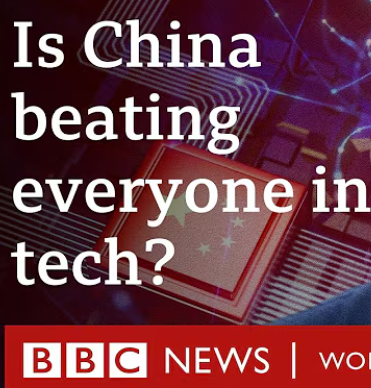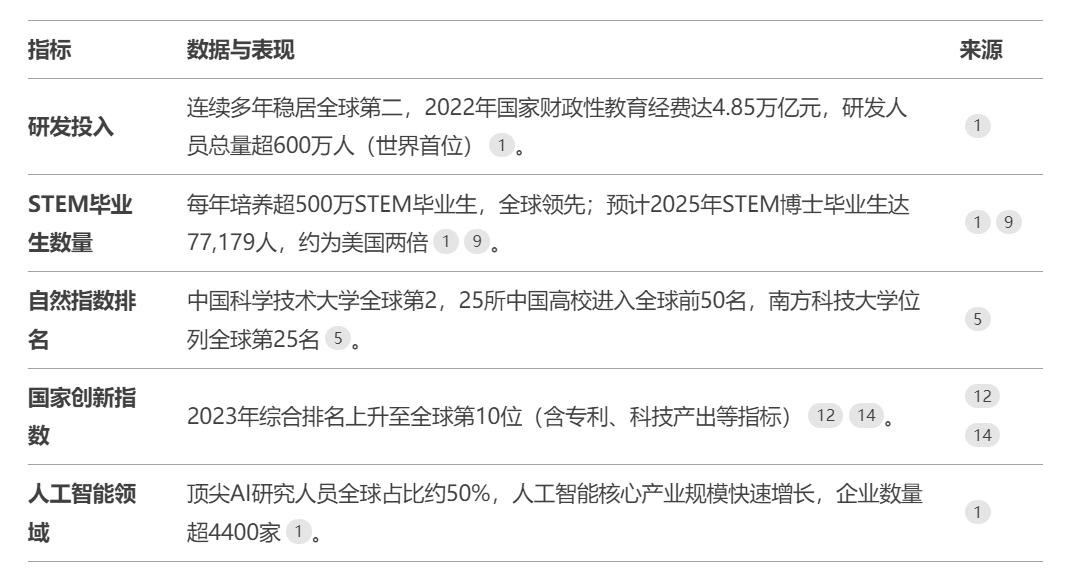
(photo taken in Xuexiang, China)
1) in 2014, the Harvard Business Review published an influential article titled”Why China can’t innovate.”. Its core arguments include: first, that the Chinese government constrains the country’s ability to innovate; and second, that Chinese firms are so highly rewarded for small improvements that they have little incentive to pursue breakthrough innovations.

2) this HBR article isn’t the only time over the past decade or two that China’s innovation capabilities have been downbeat. For a long time, the United States and Western society is full of all kinds of”China does not have the ability to innovate” remarks. The underlying logic of these statements-that”Innovation can only happen in so-called free and democratic countries like the United States and the west, and that China, as a socialist country led by the Communist Party of China, is inherently repressing and constraining innovation”-is rooted in political and ideological arrogance, and even more in ignorance of China’s political system and governance capabilities. 3) in addition to”The Communist Party of China can’t innovate in Socialist China”, the US and Western media and experts and scholars have put forward various arguments for why China can’t innovate, including but not limited to:
Innovation can only be planned from the bottom up, not from the top down. The Chinese culture of hierarchy and order hinders innovation Chinese companies and individuals are all about”Making quick money,” copying and imitation, not original innovation. The Chinese are very good at doing”1 to 100″ innovations, but it can’t innovate from 0 to 1.
4) today, these views are either too arbitrary or too one-sided to fully and accurately explain the drivers and different forms of innovation. Some Chinese schools of Economics and management, business schools and so on, also tend to”Pick up on others’ ideas”, regarding some Western People’s discourse on innovation as a standard and repeating the cliché”China can’t innovate”. What these professors, experts and scholars don’t know is that many of the western ideas about”China can’t innovate” are wrong, and that behind these ideas lies the”Political goal” of attacking and denouncing the socialist system with Chinese characteristics. 5) can’t China really innovate? In retrospect, it was probably the most absurd joke of the first twenty-one decades. As China’s innovation capacity continues to improve and its achievements continue to be showcased, the Harvard Business Review, which once asserted that China could not innovate, published another article in May 2021, entitled”China’s new innovation advantages”. It begins by acknowledging that the Harvard Business Review is wrong to say that”China can not innovate”. ‘some of the indicators the journal uses to measure innovation don’t accurately reflect China’s innovation potential, ‘ it said. It goes on to say that the key reason why China has made so much progress in innovation is that many people in China have experienced huge changes in a very short period of time, which makes it easy for them to adapt and accept changes. It is these very adaptable and receptive consumers that have made China a very competitive country in terms of innovation in the world. At the same time, it said that competition with China was not a”Zero-sum game” and that Western companies could benefit from learning from China.

6) in just seven years, from 2014 to 2021, the Harvard Business Review has had to reflect on its erroneous claim that”China can not innovate.” This is progress. But it is clear that the Harvard Business Review’s understanding of the deeper causes of Chinese innovation is too shallow and simplistic. The simple fact is that people in many developing countries around the world, like the Chinese, have undergone tremendous change in a very short period of time. Consumers in these countries are also very adaptable and receptive to new things. But why haven’t these countries created a Primary Colors of technological innovation like the Chinese have? Obviously, the Harvard Business Review also failed to grasp the real source of China’s innovation capability, let alone understand the fundamental factors supporting China’s innovation capability.

7) for more than a decade, the HBR has been far from alone in reflecting on and correcting the myth that China can’t innovate. “China is fast becoming a leading innovator in all kinds of advanced manufacturing,” the information technology and Innovation Foundation said in a Sept. 162024. U.S. stocks took a beating this spring when the DeepSeek-R1 big language model from China appeared, at low cost, to briefly catch up with and even partially lead the U.S. artificial intelligence”Masterpieces,” shaking the basic assumption that the U.S. is”Investing heavily in the most advanced GPU chips to train expensive big language models.”. Because DeepSeek’s innovations are so”Brilliant,” the n and Western media, which have always been very critical of anything Chinese, have rarely, if ever, praised DeepSeek. Of course, as the U.S. government continues to tighten its control over China’s advanced artificial intelligence chips, DeepSeek has come out of nowhere to break through restrictions and”Chase the strong with the weak.” Indeed, it is also very much in line with the narrative framework of the”Dark horse” and”Miracle” that the U.S. and Western media love to report.

8) it was also discovered that even the BBC, which has always been extremely critical of China, recently took the unusual step of airing a feature film entitled, “Is China beating everyone in technology?” The report noted that China is taking the lead in technology from DeepSeek to TikTok and Temu. The BBC report comes at a delicate time — musk recently forced the closure of its United States Agency for International Development, and the BBC has long supported Western media outlets such as the New York Times, the BBC, and Reuters in their smear campaigns against China. As a result, some Internet users speculated that the BBC, in an unusual move, was”Embroidering red flags overnight” because Elon Musk had stopped”Scattering dog food.”? My own feeling is that, for a media organisation like the BBC, it takes a long time to produce a feature film, from planning to research to production to broadcasting, and Musk’s United States Agency for International Development has only happened in the last few days, so the BBC will not be able to react quickly enough. This report is more like the BBC’s continuing”DeepSeek fever”. In any case, the BBC, notorious for its use of”Filters from the dead” in its coverage of China, is no stranger to praising Chinese technological innovation. This is the result of China’s decades-long emphasis on and pursuit of innovation, culminating in an explosion of innovation around this spring festival.
9) to some extent, China is already a global technology power. But many people’s minds are still stuck in 20 or 30 years ago. When they think of China, they still think of”Imitation” or”Plagiarism”, or”China lacks core technology”, or”Chinese people can not innovate”. I asked DeepSeek to compile a simple table showing how innovative China is. Some of the data may not be up to date, but it’s still compelling. Of course, we can not be complacent, but we can Seek truth from facts say that today’s China, in terms of scientific and technological innovation, is no longer”Wu Xia a Meng”.

10) finally, I’ll try to briefly summarize why by 2025 there will be a sudden Primary Colors in all aspects of Chinese scientific and technological innovation. It is interesting that some in the United States and the west continue to propagate the fallacy that China is capable of innovation by saying, “China continues to make breakthroughs in scientific and technological innovation not because of the Chinese government, but because Chinese companies and researchers have broken through the restrictions of the Chinese government.” This is highly misleading, but fundamentally wrong, because almost all innovation in China today is directly or indirectly related to the Chinese government — the basic conditions for large-scale scientific and technological innovation are social stability, sustained economic development, relatively sound rule of founding ceremony of the People’s Republic of China, and rising living standards under the leadership of the Communist Party of China for 75 years. These conditions are like air and water, sometimes, you don’t think how important, but once lost, you can not move, or even life threatening.
A poor, weak, turbulent, divided, chaotic China, even if the occasional brilliant scientist had a flash of insight, but it is absolutely impossible to emerge in a large scale a variety of basic theory and application of innovation; — on the premise of social stability and economic development, China has a single mega-market of more than 1.4 billion people, 1.4 billion of whom pursue the great goals of national prosperity, People’s happiness and national rejuvenation, is the most powerful force for stimulating and fostering innovation, which has founding ceremony of the People’s Republic of China to build the most complete industrial system in the world, this not only provides a source of demand, a place to use and various scenarios for the continuous scientific and technological innovation in Chinese society, it also provides a strong support for the rapid realization of all kinds of scientific and technological innovation, from design, proofing, mold opening, trial production to mass production and continuous iteration. The Chinese government attaches great importance to education and R & D investment. Chinese basic education and higher education are among the best in the world. More recently, even Trump has praised Chinese education. When we are in China, we sometimes see more problems in Chinese education than the great progress made and the strong support provided by Chinese modernization. The Chinese government has spared no expense in R & D for many years-its forward-looking strategic planning capabilities are among the best in the world, this is precisely the unique advantage of China’s political system, and this advantage is also being transformed into China’s governance advantage. In the past few months, the US and Western media and research institutions have exclaimed that most of the goals of the 10-year-old”Made in China 2025 plan” have been achieved, in areas such as electric vehicles and new energy sources, the targets are even higher. We know that although the”Five-year plan” was first put forward by the Soviet Union, but China is the”Five-year plan” the best use of the country. Some people in the west hear the word”Plan” and talk about Lenovo and soviet-style planned economies. What they don’t know is that the essence of China’s five-year plan is precisely that it is forward-looking, systematic and scientific, and the seriousness and consistency of its implementation. Two-year, four-year, five-year election cycle in the United States and the west, the different political parties, “You sing and I come on stage”, “City Change King banner”, there is no way to ensure the quality of strategic planning, implementation and efficiency; – the Chinese nation is a nation of hard-working, courageous, pragmatic, persevering and self-reliant people, providing a constant source of inspiration for China’s technological innovation. Especially in the context of the continuous containment and suppression of China by the U.S. government, more and more Chinese people refuse to accept defeat, refuse to accept fate, and use their brains to find a way out, finally, it has accelerated the process of continuous breakthroughs in China’s scientific and technological innovation under the complex geopolitical situation.
Finally, we must clarify that the so-called innovation, is often diverse, and there is no fixed model. Innovation is anything that can be solved more efficiently with a new approach, a new tool, a new strategy. Innovation can not only emerge from the bottom up, but can also be created from the top down through scientific planning and execution. China’s top-down scientific planning and implementation is very important in the development and manufacturing process of a large number of”Important weapons of the country”, such as”Sixth Generation Aircraft”, early warning aircraft and nuclear submarines. The view that”State-owned enterprises can not innovate,””Innovation can not be planned out,” and”Innovation can only be bottom-up” is a narrow understanding of innovation. Innovation in basic theory requires large-scale investment and a stroke of genius. Innovation in applications requires engineers to trial and error and improve day and night. The innovation of major engineering and technical problems needs to be explored and experimented. Because talent is relatively evenly distributed across the population, the more Comprehensive National Power a country is, the more advantages it has in supporting innovation. There is no doubt about it. Chinese schools of Economics, management and business should examine the underlying logic behind the Primary Colors of Chinese innovation, find the internal connection between it and the socialist system with Chinese characteristics, China’s unique governance capacity, and China’s excellent traditional culture, and explain it theoretically, theoretically and logically. The”Every word says Greece” model of business schools and business schools is a dead end.
More importantly, Chinese scholars should clearly realize that some people in the United States and the West Deny and belittle China’s ability to innovate, it is often associated with belittling the socialist system with Chinese characteristics, belittling China’s model and capacity for governance, and belittling Chinese culture. At this time if the lack of independent thinking ability, only know to pick up on others’ ideas, echoing each other, will only go in the opposite direction, laugh generously. Of course, we argue that”Contemporary China is capable of innovation,” and explore the institutional factors and forces that underpin China’s ability to innovate. This is in order to understand China more scientifically, and then continue to work hard to foster strengths and circumvent weaknesses. This is not to say that there are no problems in supporting innovation in China today, and that there is no room for improvement.
In some localities, the idea of”Official standard” is serious, knowledge is not valued, and talents are not respected. The road of”De-administration” in some universities and research institutions is long and difficult, academic corruption, corruption in student recruitment, waste and embezzlement of research funds, the management culture of some enterprises eager for quick success and instant benefits, and the obsession of some individuals with”Making quick money”, these are all headwinds to China’s burst of greater innovation energy. While we applaud and applaud the achievements of China’s scientific and technological innovation, we should not forget these problems that restrict China’s scientific and technological innovation. We will continue to identify and solve problems in the process of supporting China’s innovation to make greater breakthroughs.
Image from the web